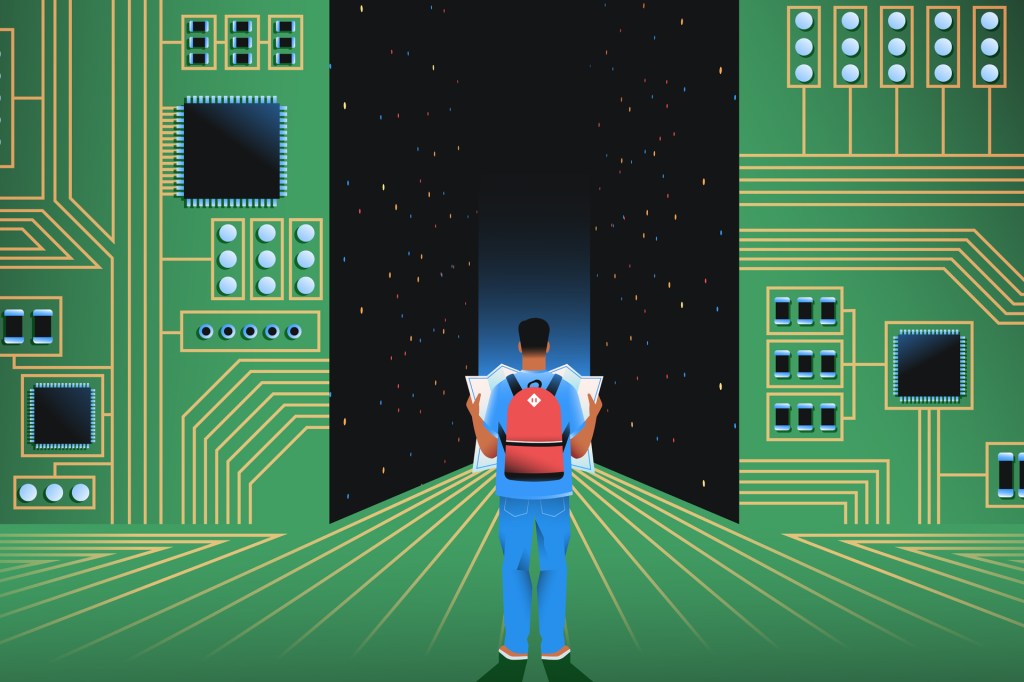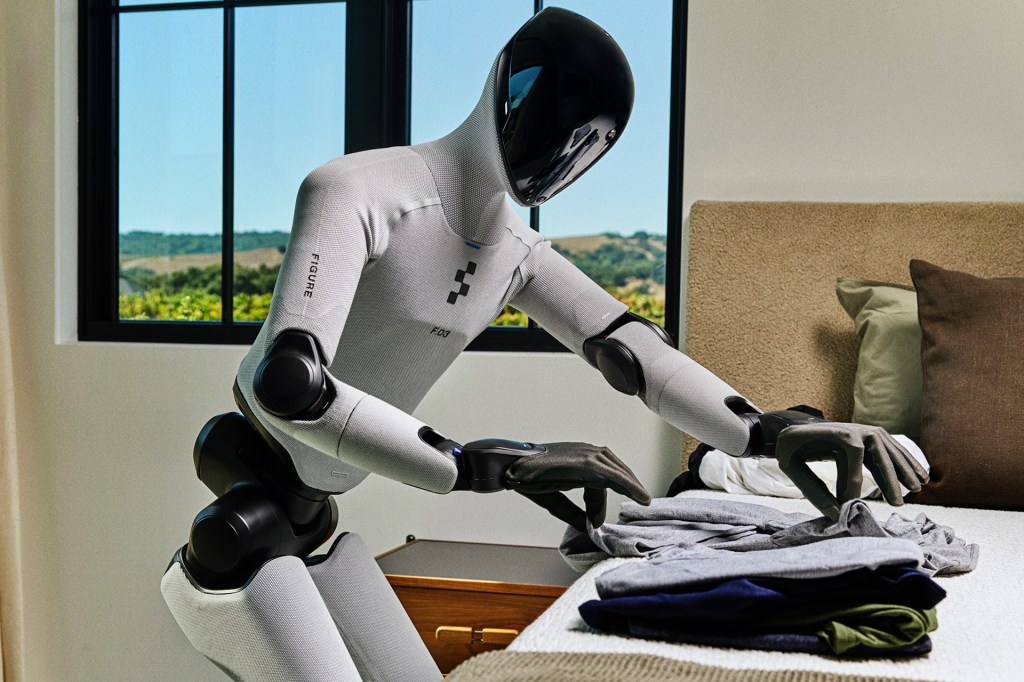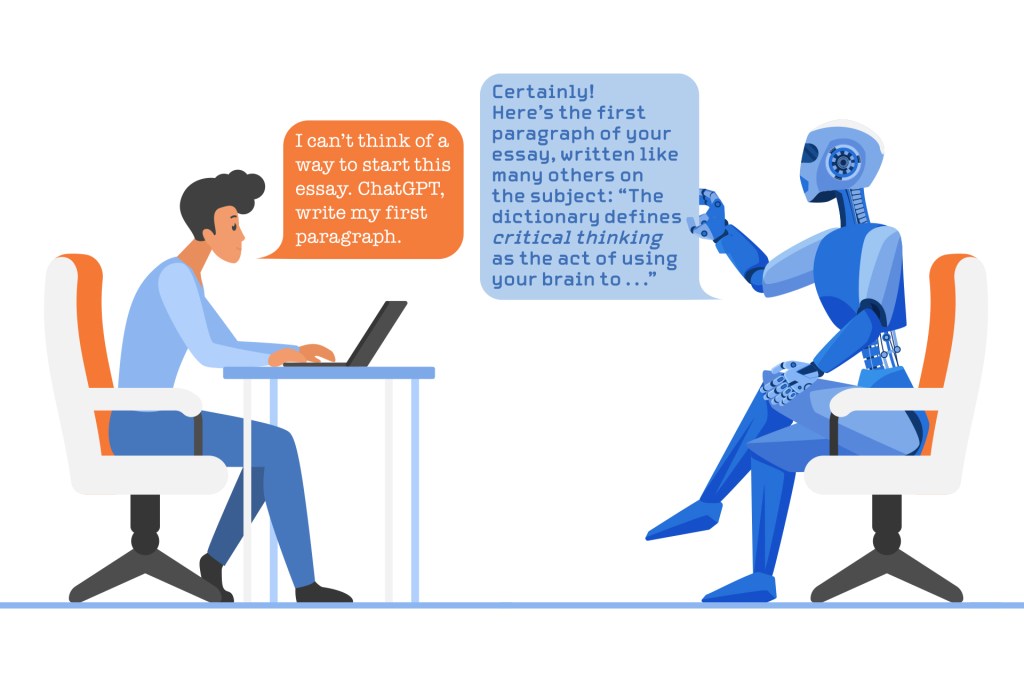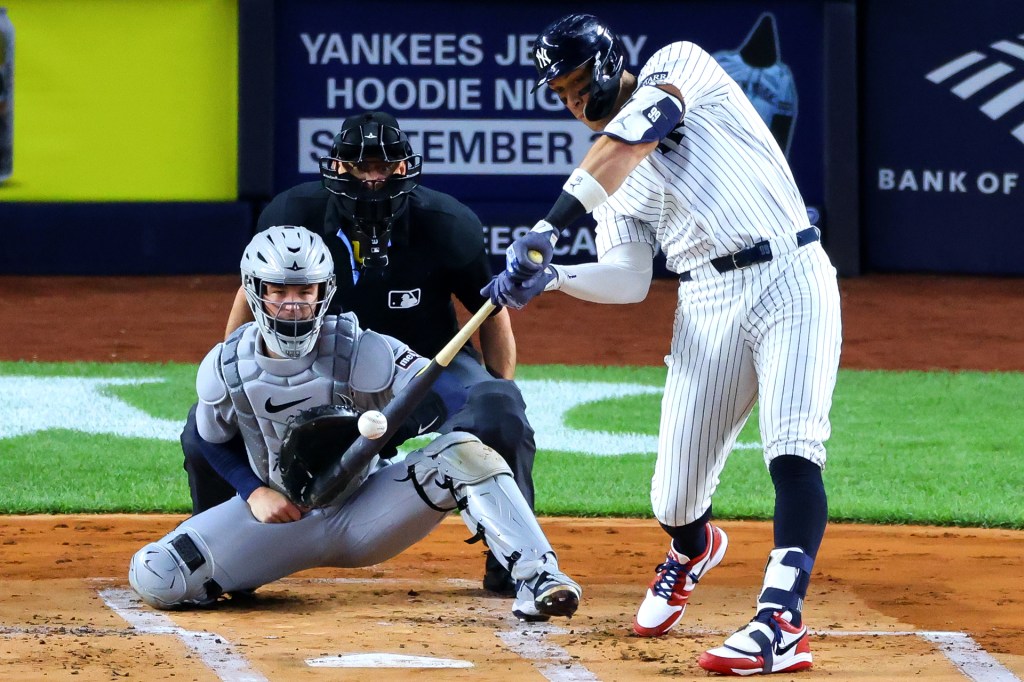Virtual Learning

Imagine flying through space, diving deep under the sea, and traveling the world. With virtual reality
virtual reality
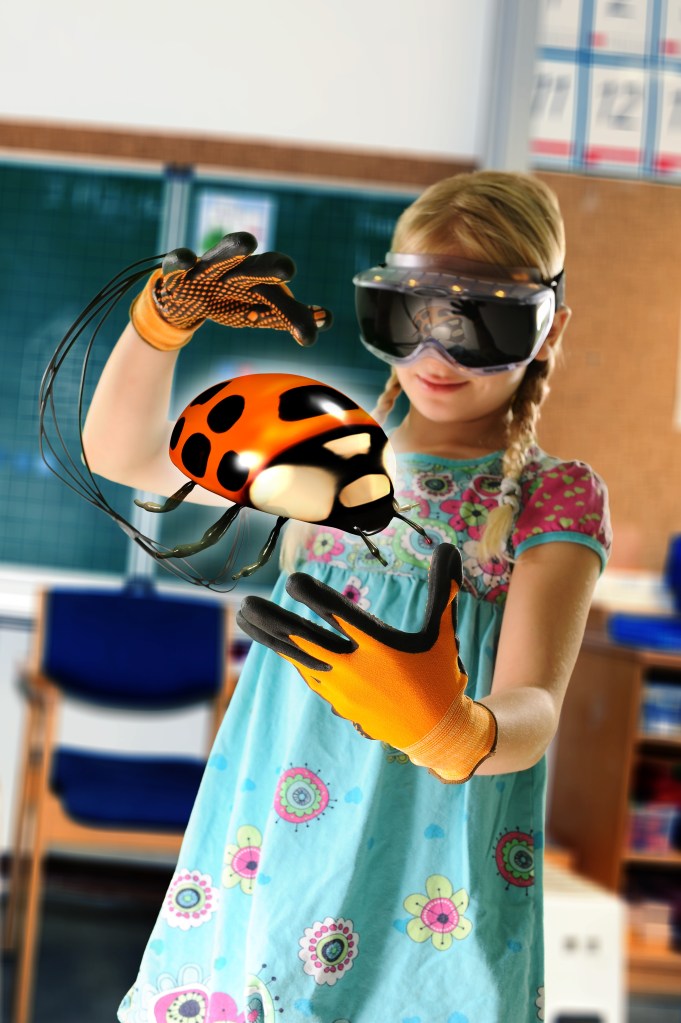 GETTY IMAGES
an artificial, or fake, environment that is experienced through sights and sounds provided by a computer
(noun)
Elaine used virtual reality to learn about insects.
(VR), students don’t need to imagine it. They can experience it without leaving their classroom.
GETTY IMAGES
an artificial, or fake, environment that is experienced through sights and sounds provided by a computer
(noun)
Elaine used virtual reality to learn about insects.
(VR), students don’t need to imagine it. They can experience it without leaving their classroom.
Google is creating VR for students. It launched Google Expeditions in 2015. Now it offers more than 600 virtual field trips. Ben Schrom works at Google Expeditions. He visits schools to teach students and teachers how to use the technology. “I’ve never seen anything like it in classrooms,” Schrom told TFK. “When we’ve come back weeks and months later, we still see the same excitement.”

TRAVEL Students take a virtual field trip using Google Cardboard.
ROBIN ZIELINSKI—THE LAS CRUCES SUN-NEWS/APSeeing Is Believing
In VR, a user wears a headset connected to a computer or mobile device to explore a 3D setting. The user can move around in the space. Sights and sounds seem real. Some say the VR experience feels like jumping into a video game.
Katelyn Flanagan, 12, used VR to jump to the surface of the moon. She goes to school in Morris Plains, New Jersey. Katelyn tried a Google Expedition about space. She visited Jupiter and Mars. “It was so cool and so lifelike,” she says.
Monica Crudele teaches third grade at the same school. “Some students were nervous,” Crudele told TFK. “They thought they were going to get dizzy. But they loved it.”

STEM Students use VR in a school in Beijing, China.
VCG/Getty ImagesVirtual Hurdles
TFK held its own survey about VR in schools. We talked to 203 school administrators. Nearly seven in 10 of those surveyed have a positive view of VR in the classroom. Of those who do not have VR in their school or district, almost half say they are very interested in using it in the future. Science, social studies, technology, and computer science are the subject areas of most interest.
Yet not everyone is excited about VR. Some people are concerned about the toll
toll
 GETTY IMAGES
a cost in money, health, or life
(noun)
Years of running took a toll on Martha’s knees.
it takes on kids’ eyesight. Doctors are studying it. They have not found any evidence that it can damage the eyes. “Right now, I don’t see any reason not to use VR,” Dr. Martin Banks says. He teaches vision science at the University of California, Berkeley.
GETTY IMAGES
a cost in money, health, or life
(noun)
Years of running took a toll on Martha’s knees.
it takes on kids’ eyesight. Doctors are studying it. They have not found any evidence that it can damage the eyes. “Right now, I don’t see any reason not to use VR,” Dr. Martin Banks says. He teaches vision science at the University of California, Berkeley.

NATURE A girl uses a headset to see a tree in 3D.
DAVE BRINDA FOR HTCAnother issue is cost. The best headsets cost more than $500. Many schools cannot afford them. Google Cardboard costs less than $15. But it must be used with a smartphone.
Students like Katelyn hope schools can find a way to bring VR to the classroom. “I would like to go places I’ve never been,” she says. “You don’t have to tell students about things anymore—you can show them.”
Would you like to try VR? The possibilities are endless.

CONAN BLISS/MADISON MOUNTAINEERING /COURTESY ENDEMOL SHINE BEYOND USA
Mountain climber Jeff Glasbrenner scales Mount Everest.The Sky's The Limit
Time Inc. is the parent company of TIME for Kids. It has aimed its VR goals for the sky. In May, Sports Illustrated, LIFE VR, and Endemol Shine Beyond USA launched Capturing Everest. The film follows three mountain climbers to the top of Mount Everest. Everest is the world’s tallest mountain. The climbers wore 360-degree cameras to film the two-month journey. One climber was Jeff Glasbrenner (left). He was the first American amputee
amputee
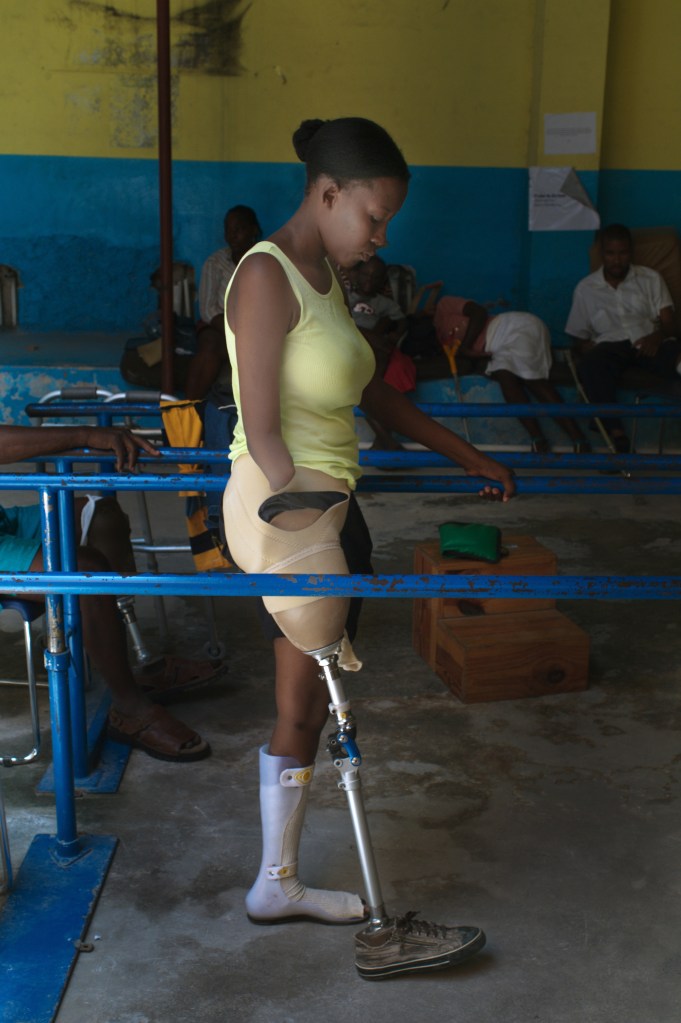 MAGGIE STEBER—THE WASHINGTON POST/GETTY IMAGES
a person who has had an arm or a leg amputated, or removed
(noun)
The amputee learned to walk on her new leg.
to scale
scale
MAGGIE STEBER—THE WASHINGTON POST/GETTY IMAGES
a person who has had an arm or a leg amputated, or removed
(noun)
The amputee learned to walk on her new leg.
to scale
scale
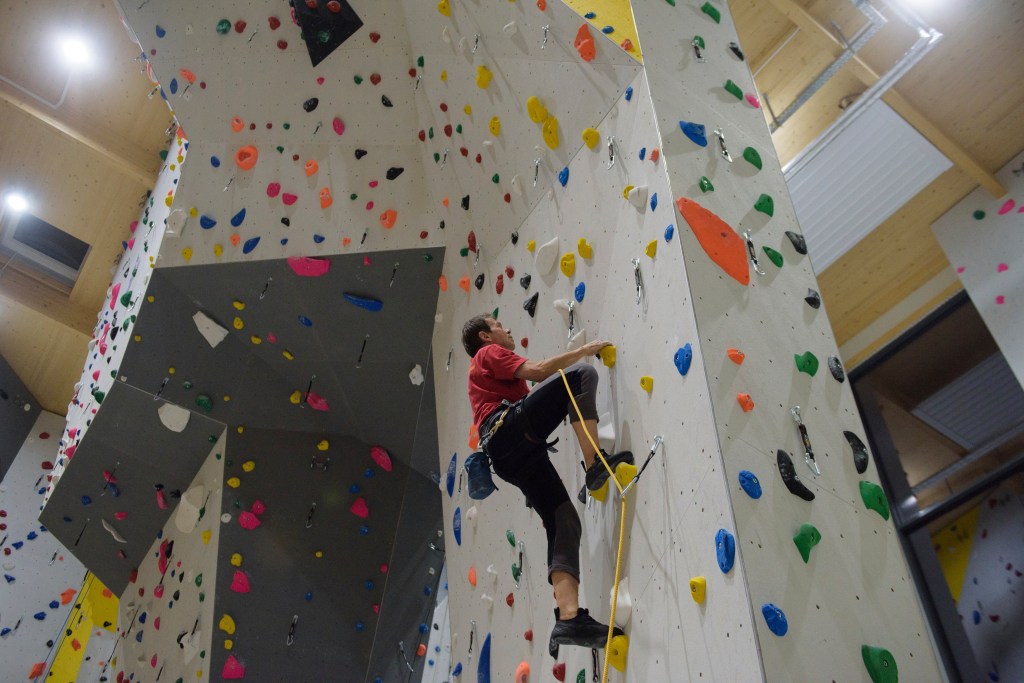 ARIFOTO UG/PICTURE-ALLIANCE/DPA/AP
to climb
(verb)
The athlete scaled the climbing wall.
Everest. “Don’t listen to others when they say you can’t do it. You have to believe in yourself,” Glasbrenner told TIME.
ARIFOTO UG/PICTURE-ALLIANCE/DPA/AP
to climb
(verb)
The athlete scaled the climbing wall.
Everest. “Don’t listen to others when they say you can’t do it. You have to believe in yourself,” Glasbrenner told TIME.
Assessment: Click here for a printable quiz. Teacher subscribers can find the answer key in this week's Teacher's Guide.






